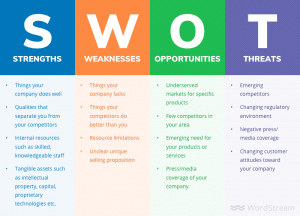More ideas are trashed before they break into the market every day… Continuation of “How to Make Your Ideas Work” Part 1
Thus, the reason why ideas are trashed sooner than they should be is sometimes a result of frustration on the part of the idea generators or initiators. Frustration also sets in when you, as the idea initiator, have tried everything you consider possible (e.g., getting a team, getting a workspace, doing ads and marketing, etc.), and still, there seems to be no result.
So, I started out in the first part of this piece by describing the need to validate your ideas before investing so much in them. Read here
You are in business to sell. Therefore, the best thing you can do for yourself is to get things right from the start of your business. Many business owners today have succeeded by fluke. They cannot replicate their success in any other thing they are doing. This would therefore mean that they cannot teach you how to succeed.
Strategic and intentional success is what is demanded. This will enable you to duplicate your success in different locations and product lines when expansion sets in. How you develop intentional success is to be intentional about the process.
So, let’s get to work… How I recommend ideas be treated:
- Validation
- Planning
- Strategy Development
- Execution
Planning
Many businesses have failed due to a lack of proper planning. You don’t expect to have an intentional result from an unplanned process. Only planned processes yield such results that can be replaced.
Thus, not to overemphasize the need for planning, let’s take a dive into how we can plan and plan properly:
The process of planning your business after validating your idea starts with a functional analysis of the situation and a factor analysis. Back in school, we were taught about SWOT and PESTLE analysis, but I didn’t see it then as being practically useful. But now, taking on business development, I can authoritatively say that, these are one of the most vital tools for every idea owner.
Businesses have been kicked out of the market because of some things that are considered to be their weaknesses, threats, or political, economic, and legal issues. A proper understanding of this would be relevant to planning every phase of your business.
Space would fail me to go into details of SWOT analysis but I also think the above image is quite explanatory. Maybe I will do a write-up specifically on SWOT analysis someday.
Pestle Analysis
PESTLE analysis describes the effect of political laws, economic situations, social-cultural beliefs, technological innovations, environmental effects, and legal issues on your business.
A proper analysis of the above factors is rightly relevant to the planning process of idea execution.
After doing the necessary analysis, planning requires certain things, as will be discussed below:
- Vision: The driving force of any business is the vision. However, people would only relate to your ideas when they can validate your vision and most of all see through the vision. Your vision will drive you through every other part of your business. it will aid your decision-making processes etc. Develop a good, big but brief vision.
- Mission: This is simply how you want to achieve that big vision of yours. If your mission does not tell people how you intend to achieve your vision, then you might consider changing it.
- Core Values: So, what principles will you want to build your business around? How do you want your staff attitude to be in line? Package it all in core values. Note: Make it as simple and short as possible (3 to 5 is good).
- Value Proposition: What are you bringing to the table? What is that unique thing that you will do that others are not doing? The beauty of defining your value proposition is that it forms your competitive advantage.
- Brand Promise: What would you promise your customers, employees, and investors? Think about this…
How do you get an idea to work?
Implementing Your Ideas:
- Define Who Will Be Affected by Your Idea. …
- Think About How It Will Affect Them. …
- Plan “Backward” …
- Evaluate Your Proposal. …
- Ask for Feedback. …
- Start Taking Action. …
- Focus on the End Result.
How Do You Turn Your Ideas Into Action?
Once you’ve chosen whatever idea(s) to put into practice and have a strategy, you must carve out the necessary time to make it happen! Getting focused entails making the time and space necessary to bring the concept to life. The concept stage must be followed by action. Put all of your efforts into achieving that.
What Makes An Idea Successful?
A concept that has the potential to succeed and is subsequently put into practice utilizing a tried-and-true procedure is said to be successful.
How Do You Float An Idea?
To “float” an idea is to put forth something novel or surprising with the intention of seeing how it is received by others. A concept is floated with the intention of seeing what develops.
What Makes an Idea Clear?
A clear notion is one that has been understood to the point where it will be recognized wherever it is encountered and where no other idea will be mistaken for it. It is deemed obscure if it falls short of this clarity. What makes a concept obvious?
What is The Best Position To Float?
With your arms raised and your hands supporting your head from underneath, you can rest your neck and head. Allow your head to drop into your arms, where the buoyant water will support you.
What Makes An Idea Unique?
Additionally, a notion or idea may only be said to be original if it outperforms its forerunner and accomplishes its goals in a better and more effective manner. Everywhere there is a need for original ideas! Every area of our lives benefits from unique ideas.
Conclusion
Don’t be a party to neglected ideas. Get to work, plan your ideas, and get them running! In the next part, I will deal with strategy development and execution. Use the comment space to ask your questions, and make your contributions. I will definitely reply.
Cheers to our success!









